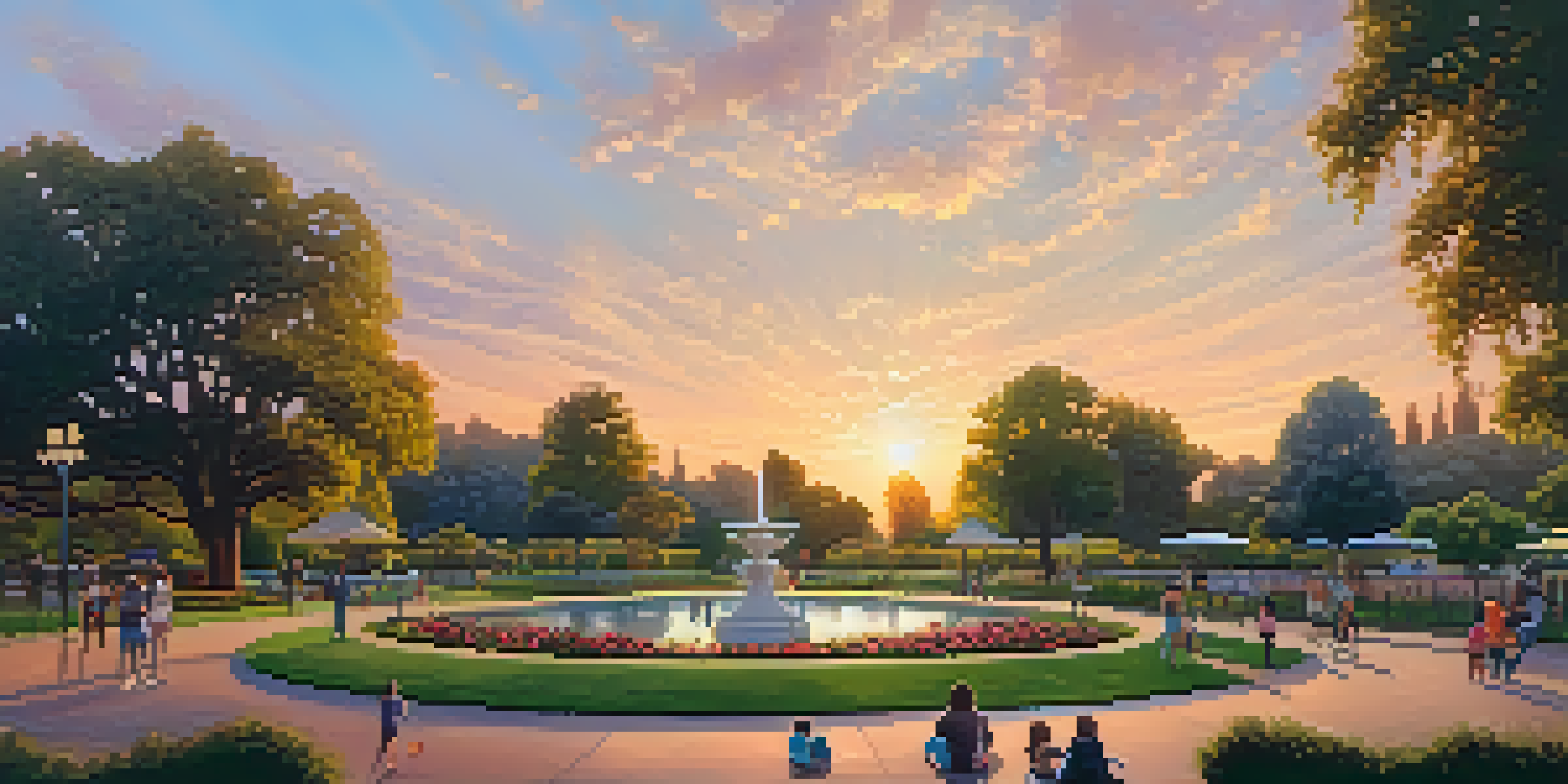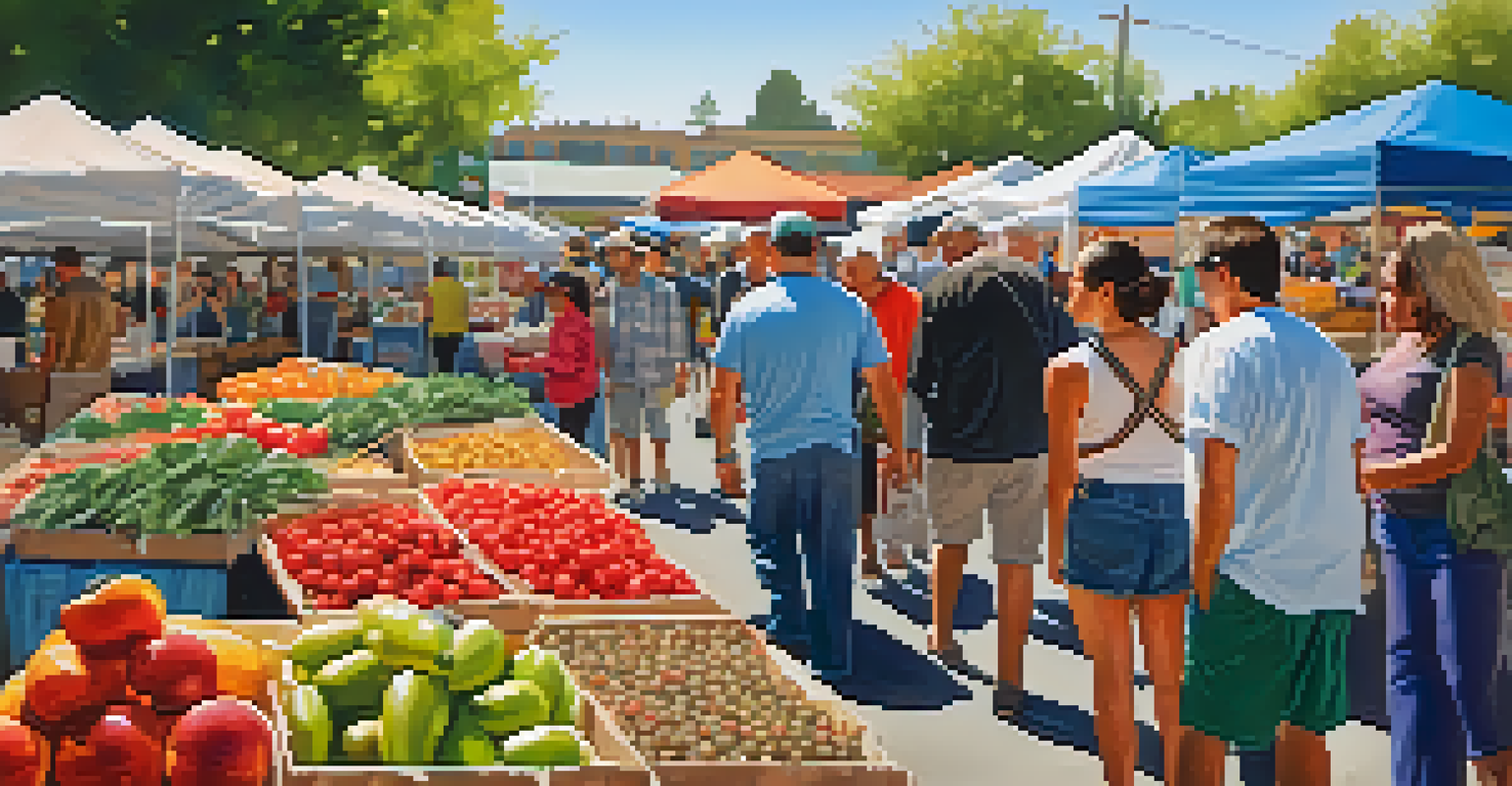The Cultural Significance of Sacramento's East Sacramento

A Brief History of East Sacramento's Development
East Sacramento, often referred to as 'East Sac', has a vibrant history that dates back to the late 19th century. Originally a collection of farmland, it evolved into a suburban neighborhood as Sacramento expanded. The area is known for its charming tree-lined streets and historic architecture, reflecting the growth and change of the city over the decades.
History is not a burden on the memory but an illumination of the spirit.
One of the defining moments in East Sacramento's history was the introduction of the streetcar system in the early 1900s, which made the area more accessible and appealing to residents. This development encouraged families and professionals to settle in the neighborhood, contributing to its growth as a desirable place to live. Today, many of the original homes still stand, showcasing the architectural styles of that era.
As East Sacramento developed, it attracted a diverse community, fostering a blend of cultures and traditions. This diversity is still evident today, as residents proudly celebrate their heritage through various cultural events and festivals, making East Sacramento a unique microcosm of the larger city.
Cultural Landmarks That Define East Sacramento
One of the most iconic landmarks in East Sacramento is the historic Sutter's Fort, which played a crucial role in California's early history. This fortification served as a trading post and agricultural hub during the Gold Rush, and today it stands as a museum that educates visitors about the state's pioneer days. Its presence in the neighborhood emphasizes the importance of preserving local history.

Another cultural gem is the beautiful McKinley Park, which offers a serene escape for residents and visitors alike. With its expansive green spaces, rose garden, and playgrounds, the park serves as a community gathering spot for events and recreational activities. It's a place where families come together, showcasing the community spirit of East Sacramento.
East Sacramento's Rich History
The area's transformation from farmland to a vibrant suburban neighborhood reflects its significant historical development.
Lastly, the area's thriving arts scene is evident in local galleries and studios, where artists showcase their work and host events. From art walks to workshops, these venues promote creativity and foster a sense of connection among residents. This cultural vibrancy helps to define East Sacramento as a dynamic hub for artistic expression.
The Role of Community Events in Cultural Identity
Community events play a vital role in shaping the cultural identity of East Sacramento. Activities like the annual East Sacramento Garden Tour invite residents to showcase their gardens, while also allowing neighbors to connect and appreciate the beauty of their community. These events foster a sense of belonging and pride among residents.
The best way to predict the future is to create it.
Moreover, festivals like the East Sacramento Farmers Market not only support local agriculture but also create a space for cultural exchange. Vendors representing diverse culinary traditions share their foods, creating a melting pot of flavors and experiences. This market is a vibrant example of how food can bring people together, bridging cultural gaps and fostering community spirit.
In addition, holiday celebrations bring the community together in meaningful ways. Events such as the Halloween Parade and Fourth of July festivities allow families to participate in traditions that strengthen their ties to the neighborhood. These gatherings help cultivate a sense of shared history and collective memory, reinforcing the cultural significance of East Sacramento.
The Influence of Local Businesses on Culture
Local businesses in East Sacramento significantly contribute to the area's cultural fabric. From family-owned restaurants serving traditional dishes to boutiques offering handmade crafts, these establishments reflect the community's diversity and creativity. They serve not just as places to shop or dine, but as hubs where residents can gather and connect.
One notable example is a local café that hosts open mic nights, providing a platform for emerging artists and musicians. This not only supports local talent but also encourages cultural exchange and engagement among residents. Such initiatives help to create a vibrant atmosphere where creativity can flourish.
Cultural Events Foster Community
Community events like farmers markets and holiday celebrations play a crucial role in strengthening cultural identity and connections among residents.
Additionally, local businesses often partner with community organizations to sponsor events and activities, reinforcing their commitment to the neighborhood. This collaboration fosters a sense of unity and shared purpose, showcasing how local commerce can enhance the cultural landscape of East Sacramento.
The Impact of Education on Cultural Awareness
Education plays a crucial role in promoting cultural awareness in East Sacramento. Local schools often incorporate multicultural curricula that celebrate the diverse backgrounds of their students. By exposing children to various cultures, these schools help cultivate a sense of respect and appreciation for diversity from a young age.
Moreover, educational institutions frequently host events such as cultural fairs, where students and families can share their heritage through performances, food, and art. These events not only educate the community about different cultures but also create opportunities for dialogue and connection among residents.
In addition, partnerships with local organizations and cultural institutions enhance educational programs by providing resources and expertise. This collaboration enriches the learning experience and ensures that cultural education remains a priority in East Sacramento, fostering a more inclusive community.
Preserving Cultural Heritage in a Changing Landscape
As East Sacramento continues to grow and evolve, the challenge of preserving its cultural heritage becomes increasingly important. Residents and local organizations are actively working to protect historic sites and promote awareness of the area's rich history. This commitment ensures that future generations can appreciate and learn from the past.
Community efforts include initiatives to restore and maintain historical landmarks, as well as advocacy for policies that protect the neighborhood's character. By engaging in these activities, residents play a vital role in shaping the future of East Sacramento while honoring its cultural roots.
Local Businesses Enhance Culture
Family-owned businesses not only provide unique products but also serve as community hubs that promote cultural exchange and engagement.
Additionally, storytelling through oral histories and community archives helps document the experiences of long-time residents. This preservation of narratives not only enriches the cultural tapestry of East Sacramento but also serves as a reminder of the resilience and diversity that define the community.
The Future of Cultural Significance in East Sacramento
Looking ahead, the cultural significance of East Sacramento is poised to evolve as new generations bring their perspectives and experiences. This ongoing transformation presents opportunities for fresh cultural expressions and collaborations that reflect the community's dynamic nature. As the neighborhood continues to attract newcomers, the blend of traditions will enrich the cultural landscape.
Furthermore, technology plays a pivotal role in shaping how cultural experiences are shared and celebrated. Social media platforms provide a space for residents to showcase their talents, promote local events, and connect with others, fostering a sense of community in the digital age. This interconnectedness enhances cultural exchange and allows for a broader appreciation of East Sacramento's diversity.

Ultimately, the future of East Sacramento's cultural significance lies in the hands of its residents. By embracing change while honoring their heritage, the community can ensure that its cultural identity remains vibrant and inclusive, making East Sacramento a place where everyone feels at home.